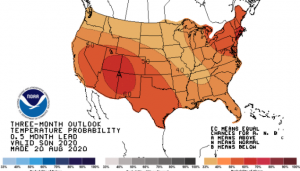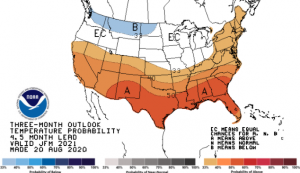What to Know, Now
Currently, the high temperatures across the western two-thirds of the U.S. are causing record levels of natural gas consumption. Paired with a decline in natural gas production, we are starting to see an increase in natural gas prices.
Downward price pressure still exists from the continued, but declining, natural gas storage surplus (see chart below) and the economic slowdown from COVID-19. This winter is forecasted to have mostly above normal temperatures for most of the country. If this forecast holds true, we could see another low-demand winter like last year and an increase in the storage surplus.
Natural Gas
Stored natural gas is currently at surplus levels with declining production still slightly outpacing demand. Recent hot weather has challenged the market with high AC/electricity demand and as a result, has increased prices for the next 12 months. September, October, and November have seen the highest uptick in prices of about 20%, while the winter period has increased by about 10%. The Natural Gas Wholesale NYMEX Prices table below shows the pricing trend from 2019 to 2022, with lower rates in 2020 and increasing costs into 2021.
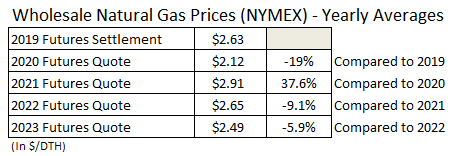
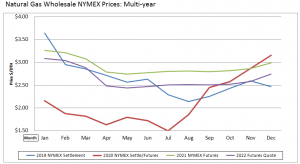
Natural Gas Storage Status – Declining Surplus Into 2021
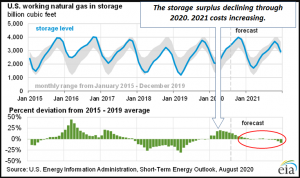
Electricity
Since the price of electricity generally moves with the price of natural gas, the two prices have similar trends. Electric rates are fairly low but have seen increases with the arrival of hot summer weather. The lower rates in 2020 are now 40% below the 2021 prices. Weighted electric supply rates from ConEd will likely be in the $0.085/KWH to $0.11/KWH range. Price trends vary from state to state, but generally, prices are increasing each calendar year.
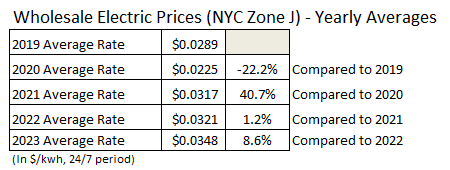
The Bottom Line
The current pricing trend creates higher fixed price rates for the longer term (two- and three-year) natural gas and electric contracts. Twelve-month contracts may have the lowest fixed rates.
Winter-focused heating accounts will see a slight cost reduction in 2020, while accounts with steady year-round demand (such as heat and hot water accounts) may see lower costs this summer and more favorable fixed contract rates. If you rely on fixed-price contracts to control budgeted costs, this is an excellent time to review the impact of your next contract.
Longer-term fixed-price contracts are currently at higher rates than shorter-term ones but offer price stability during volatile periods such as this summer and next winter. Since energy costs vary in each state it is best to validate any savings opportunities with refreshed pricing on your next supply agreement.
Not sure what your options are or how to proceed? Bright Power can help.
Temperature Probability Maps
Current temperature forecasts for the remainder of this year are calling for above-normal temperatures for most of the U.S. These forecasts will likely continue to support market price volatility as a hot summer and early fall can trigger high electric and natural gas usage and rates, while a mild winter could reverse that natural gas winter demand causing prices to decline.
